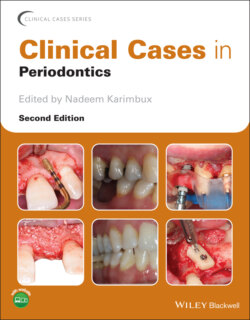Читать книгу Clinical Cases in Periodontics - Группа авторов - Страница 119
Discussion
ОглавлениеThe patient presented with a probing depth of 8 mm on the buccal furcation area of tooth #19, possibly due to the presence of a CEP that extended deep into the furcation. The presence of the CEP prevented proper soft tissue attachment at the furcal area, leading to the formation of a deep periodontal pocket. Bone loss at the furcal area was most likely due to prolonged plaque accumulation in this periodontal pocket that subsequently led to chronic inflammation and hence attachment loss. By removing the CEP, enamel at the furcation was eliminated to expose the underlying dentin, thereby allowing soft tissue attachment to occur over this area. In so doing, a periodontal pocket was eliminated. Note that a grade II furcation can also be treated with guided tissue regeneration or a bone graft.
It is critical to identify all local etiologic factors because they may accelerate periodontal disease progression and affect the diagnosis, prognosis, and treatment of the disease.
